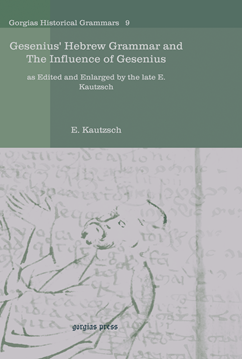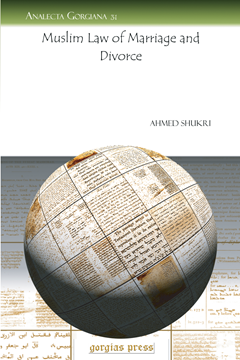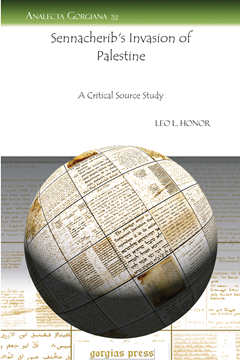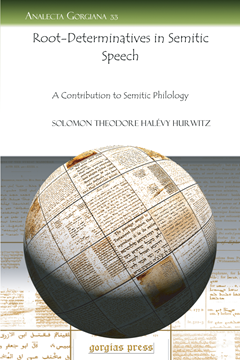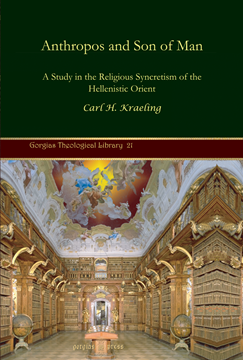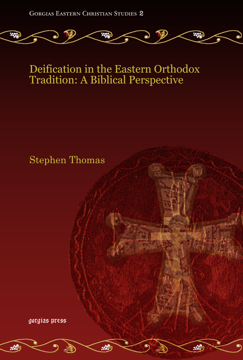Gesenius' Hebrew Grammar and The Influence of Gesenius
as Edited and Enlarged by the late E. Kautzsch
By E. Kautzsch
Series: Kiraz Historical Grammars Archive 9
ISBN: 978-1-59333-623-3
Gesenius’ Hebrew Grammar is an essential reference tool for any student of classical Hebrew. Apart from the thorough explanation given to each aspect of grammar and syntax, this volume contains an exhaustive scriptural index which leads the user directly to passages that stand as examples of difficult constructions. A full paradigm of the Hebrew verb is also included.
$260.00 (USD) $156.00 (USD)
Sumerian Hymns from Cuneiform Texts in the British Museum
Transliteration, Translation and Commentary
Series: Analecta Gorgiana 30
ISBN: 978-1-59333-624-0
Vanderburgh’s noted study of the Sumerian hymns to Bel, Sin, Adad, and Tammuz in the British Museum is an excellent example of one of the early attempts to grapple with the difficulties of the Sumerian language. Each hymn is presented in transliteration and translation, and these are accompanied by the author’s own commentary.
$53.00 (USD) $31.80 (USD)
Muslim Law of Marriage and Divorce
By Ahmed Shukri
Series: Analecta Gorgiana 31
ISBN: 978-1-59333-625-7
Concerned that many in his day did not understand basic Muslim teaching led Shukri to produce this brief monograph. In it he explores the various schools of Islamic jurisprudence and the teachings concerning the legal issues of marriage and divorce, including the topic of the equalities of the partners.
$61.00 (USD) $36.60 (USD)
Sennacherib's Invasion of Palestine
A Critical Source Study
By Leo L. Honor
Series: Analecta Gorgiana 32
ISBN: 978-1-59333-626-4
Considering both the Assyrian and biblical sources for the description of Sennacherib’s devastating invasion on Palestine, Honor tests the records to see if he can develop an historical account. He makes use of the Annals of Sennacherib and the biblical books of 2 Kings, 2 Chronicle, and Isaiah.
$62.00 (USD) $37.20 (USD)
Root-Determinatives in Semitic Speech
A Contribution to Semitic Philology
Series: Analecta Gorgiana 33
ISBN: 978-1-59333-627-1
Suggesting that the Semitic root may be, at least subconsciously, biliteral, Hurwitz launches into a study of this phenomenon. Discussing linguistic phenomena such as pluriliteral forms, root-differentiation, and folk-etymologies, this little study covers significant ground for understanding the underlying structure of biblical Hebrew.
$62.00 (USD) $37.20 (USD)
The Five Post-Kleisthenean Tribes
Series: Analecta Gorgiana 34
ISBN: 978-1-59333-629-5
Exploring the important but complex historical period following the rule of Cleisthenes in Athens, Bates provides a handy reference for the tribes that emerged from this early experiment in democracy. The tribes of Antigonis, Demetrias, Ptolemais, Attalis, and Hadrianis are all considered, along with the families (demes) that made up each tribe.
$49.00 (USD) $29.40 (USD)
Akbar and the Jesuits
An Account of the Jesuit Missions to the Court of Akbar
Series: Kiraz Historic Travels Archive 7
ISBN: 978-1-59333-630-1
The narrative of the Jesuit missions to Akbar, ruler of the Mughal Empire in India, is a noted period piece in travel writing. Although the author never traveled abroad, he compiled a substantial history of Jesuit missionary activity. This book narrates the missions to India in the 16th and 17th centuries.
$170.00 (USD) $102.00 (USD)
Anthropos and Son of Man
A Study in the Religious Syncretism of the Hellenistic Orient
Series: Kiraz Theological Archive 21
ISBN: 978-1-59333-631-8
Kraeling’s treatment of the ancient figure known as the "Anthropos” remains a challenging read even after several decades. Surveying Hellenistic, Gnostic, Manichean, Mandean, and Jewish sources, the author suggests a ubiquitous character known as the Anthropos was used in the New Testament to characterize aspects of Christ.
$133.00 (USD) $79.80 (USD)
Old Babylonian Temple Records
ISBN: 978-1-59333-632-5
Lau’s study focuses on a set of Babylonian temple texts in the library of Columbia University. These tablets are mostly administrative receipts, giving insight into the revenue and offering accounting in the temple. The texts are presented in transcription, English translation, and with line drawings.
$137.00 (USD) $82.20 (USD)
A Biblical Perspective
Series: Gorgias Eastern Christian Studies 2
ISBN: 978-1-59333-638-7
A popularly-written study of the biblical roots of the Eastern Orthodox Church’s mystical understanding of the knowledge of God. This unique study brings together the best of contemporary exegesis with the tradition of Eastern Christianity and illustrates the biblical roots of the Eastern Church's understanding of grace as the energy of God. The book presents, in lay terms, the shape for an Orthodox biblical theology for the 21st century and will be of interest to all Christians for whom the Bible is divine revelation and for whom tradition continues to be creative.
$82.00 (USD) $49.20 (USD)
